-
 Bitcoin
Bitcoin $108,562.4295
0.46% -
 Ethereum
Ethereum $2,533.9553
1.52% -
 Tether USDt
Tether USDt $1.0002
-0.01% -
 XRP
XRP $2.2542
2.23% -
 BNB
BNB $662.4567
1.48% -
 Solana
Solana $151.4114
3.48% -
 USDC
USDC $0.9999
0.00% -
 TRON
TRON $0.2860
0.91% -
 Dogecoin
Dogecoin $0.1685
3.72% -
 Cardano
Cardano $0.5809
1.63% -
 Hyperliquid
Hyperliquid $39.2916
1.85% -
 Sui
Sui $2.8874
0.85% -
 Bitcoin Cash
Bitcoin Cash $496.5801
2.72% -
 Chainlink
Chainlink $13.3582
2.48% -
 UNUS SED LEO
UNUS SED LEO $9.0279
0.07% -
 Avalanche
Avalanche $18.0773
2.30% -
 Stellar
Stellar $0.2426
3.05% -
 Toncoin
Toncoin $2.9086
6.01% -
 Shiba Inu
Shiba Inu $0.0...01170
2.97% -
 Hedera
Hedera $0.1587
3.47% -
 Litecoin
Litecoin $87.4596
1.13% -
 Monero
Monero $317.0425
0.73% -
 Polkadot
Polkadot $3.3778
1.90% -
 Dai
Dai $0.9999
-0.01% -
 Ethena USDe
Ethena USDe $1.0001
-0.01% -
 Bitget Token
Bitget Token $4.4095
0.63% -
 Uniswap
Uniswap $7.3593
6.80% -
 Pepe
Pepe $0.0...09910
3.64% -
 Aave
Aave $274.7388
2.68% -
 Pi
Pi $0.4607
0.48%
How to achieve data privacy protection in blockchain development?
Blockchain developers use zero-knowledge proofs, ring signatures, homomorphic encryption, off-chain storage, and confidential transactions to enhance data privacy and security.
Apr 15, 2025 at 05:00 pm
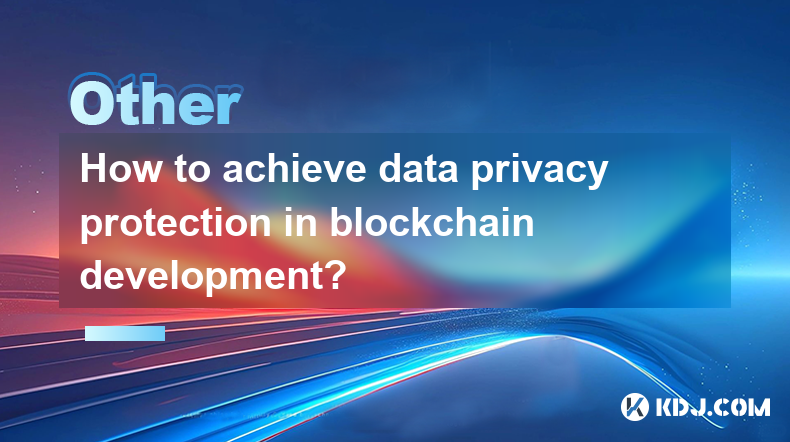
Achieving data privacy protection in blockchain development is a critical aspect that developers and organizations must consider to ensure the security and confidentiality of user data. Blockchain technology, by its nature, is transparent and immutable, which can pose challenges when trying to protect sensitive information. This article will explore various methods and techniques used to enhance data privacy within blockchain systems, ensuring that users' personal and financial information remains secure.
Understanding the Basics of Blockchain Privacy
Before delving into the specific techniques for enhancing privacy, it's essential to understand the inherent privacy issues within blockchain technology. Traditional blockchains like Bitcoin and Ethereum are designed to be public and transparent, meaning all transaction data is visible to anyone who accesses the blockchain. This transparency is beneficial for verifying transactions and maintaining trust in the system, but it can also expose sensitive information.
For instance, in Bitcoin, while the identities of users are pseudonymous, it is possible to trace transactions back to individuals through sophisticated analysis techniques. This raises concerns about privacy and security, especially in applications that handle sensitive data such as healthcare records or financial transactions.
Implementing Zero-Knowledge Proofs
One of the most promising solutions for enhancing privacy on the blockchain is the use of zero-knowledge proofs (ZKPs). ZKPs allow one party to prove to another that a given statement is true without revealing any information beyond the validity of the statement itself. This cryptographic technique can be used to verify transactions on the blockchain without exposing the details of those transactions.
- Choose a ZKP protocol: Select a suitable zero-knowledge proof protocol such as zk-SNARKs or zk-STARKs, depending on your specific needs.
- Integrate the protocol: Implement the chosen protocol into your blockchain platform. This typically involves modifying the consensus mechanism to support ZKP-based transaction validation.
- Test and validate: Thoroughly test the implementation to ensure it functions correctly and provides the desired level of privacy.
By using ZKPs, blockchain developers can create systems where transactions are verified and validated without revealing the actual data, thereby enhancing user privacy.
Utilizing Ring Signatures
Another technique for achieving privacy in blockchain development is the use of ring signatures. Ring signatures allow a user to sign a transaction on behalf of a group, making it difficult to determine which member of the group actually signed the transaction. This method is used in cryptocurrencies like Monero to obfuscate the origin of transactions.
- Implement ring signature algorithm: Choose a ring signature algorithm, such as the one used in Monero, and integrate it into your blockchain's transaction signing process.
- Modify transaction structure: Adjust the transaction structure to accommodate the ring signature, ensuring that it can be verified by the network while maintaining the anonymity of the signer.
- Test and deploy: Test the ring signature implementation thoroughly to ensure it works as intended and deploy it on your blockchain network.
Ring signatures provide a high level of anonymity for users, making it an effective tool for enhancing privacy in blockchain systems.
Employing Homomorphic Encryption
Homomorphic encryption is another advanced technique that can be used to protect data privacy on the blockchain. This type of encryption allows computations to be performed on encrypted data without decrypting it first, meaning sensitive data can be processed on the blockchain while remaining encrypted.
- Select a homomorphic encryption scheme: Choose a suitable homomorphic encryption scheme, such as fully homomorphic encryption (FHE) or partially homomorphic encryption (PHE), based on your specific requirements.
- Integrate the scheme: Implement the chosen encryption scheme into your blockchain platform, ensuring that it can handle the necessary computations on encrypted data.
- Test and optimize: Test the implementation to ensure it works correctly and optimize it for performance, as homomorphic encryption can be computationally intensive.
By using homomorphic encryption, blockchain developers can ensure that sensitive data remains encrypted throughout its lifecycle on the blockchain, enhancing privacy and security.
Leveraging Off-Chain Data Storage
Another approach to enhancing data privacy in blockchain development is to use off-chain data storage. This method involves storing sensitive data off the blockchain and only storing hashes or references to the data on the blockchain itself. This way, the actual data remains private and secure, while the blockchain can still be used to verify the integrity of the data.
- Choose an off-chain storage solution: Select a secure off-chain storage solution, such as a decentralized storage network like IPFS or a traditional cloud storage service.
- Implement data hashing: Hash the sensitive data and store the hash on the blockchain, ensuring that the integrity of the data can be verified without exposing the data itself.
- Integrate with the blockchain: Modify your blockchain platform to support the use of off-chain data storage, ensuring that it can interact with the chosen storage solution seamlessly.
- Test and deploy: Thoroughly test the integration to ensure it works as intended and deploy it on your blockchain network.
By leveraging off-chain data storage, blockchain developers can significantly enhance the privacy of sensitive data while still benefiting from the security and immutability of the blockchain.
Using Confidential Transactions
Confidential transactions are another technique used to enhance privacy on the blockchain. This method involves encrypting the amount of a transaction, so only the sender and receiver can see the actual amount being transferred. This is achieved using cryptographic techniques such as Pedersen commitments.
- Implement Pedersen commitments: Integrate Pedersen commitments into your blockchain platform to encrypt transaction amounts.
- Modify transaction validation: Adjust the transaction validation process to support the use of confidential transactions, ensuring that the encrypted amounts can be verified without being revealed.
- Test and deploy: Test the implementation thoroughly to ensure it works as intended and deploy it on your blockchain network.
Confidential transactions provide an additional layer of privacy for users, making it difficult for third parties to determine the value of transactions on the blockchain.
Frequently Asked Questions
Q: Can zero-knowledge proofs be used in all types of blockchains?
A: Zero-knowledge proofs can be implemented in various types of blockchains, but the specific implementation may vary depending on the blockchain's architecture and consensus mechanism. For instance, public blockchains like Ethereum have seen successful implementations of zk-SNARKs, while private blockchains may require different approaches.
Q: How does the use of off-chain data storage affect the performance of a blockchain?
A: Off-chain data storage can improve the performance of a blockchain by reducing the amount of data stored on the blockchain itself. However, it may introduce additional latency due to the need to interact with external storage solutions. Careful optimization and integration are necessary to balance privacy and performance.
Q: Are there any regulatory concerns associated with using ring signatures for privacy?
A: Yes, the use of ring signatures can raise regulatory concerns, particularly in jurisdictions with strict anti-money laundering (AML) and know-your-customer (KYC) regulations. The anonymity provided by ring signatures can make it challenging for authorities to track transactions, potentially leading to compliance issues.
Q: Can homomorphic encryption be used for all types of data on the blockchain?
A: Homomorphic encryption can be used for various types of data, but its applicability depends on the specific use case and the computational resources available. Fully homomorphic encryption, which allows for arbitrary computations on encrypted data, is computationally intensive and may not be suitable for all applications. Partially homomorphic encryption, which supports specific types of computations, may be more practical for certain use cases.
Disclaimer:info@kdj.com
The information provided is not trading advice. kdj.com does not assume any responsibility for any investments made based on the information provided in this article. Cryptocurrencies are highly volatile and it is highly recommended that you invest with caution after thorough research!
If you believe that the content used on this website infringes your copyright, please contact us immediately (info@kdj.com) and we will delete it promptly.
- BNB, Binance, and CZ: What's the Buzz?
- 2025-07-07 06:50:12
- Hedera Hashgraph: ETF Buzz and Bullish Charts – HBAR to the Moon?
- 2025-07-07 06:30:12
- BlockDAG, Pi Network, and SUI Stable: Navigating the Crypto Landscape in '25
- 2025-07-07 07:10:13
- SYRUP Token's Sweet Ascent: TVL Surges and DeFi Growth on Maple Finance
- 2025-07-07 07:15:13
- Bitcoin, Listed Companies, and ETFs: A New York Minute on Crypto Trends
- 2025-07-07 06:30:12
- Toncoin's UAE Rollercoaster: Golden Visas, Price Drops, and What's Next
- 2025-07-07 06:35:13
Related knowledge
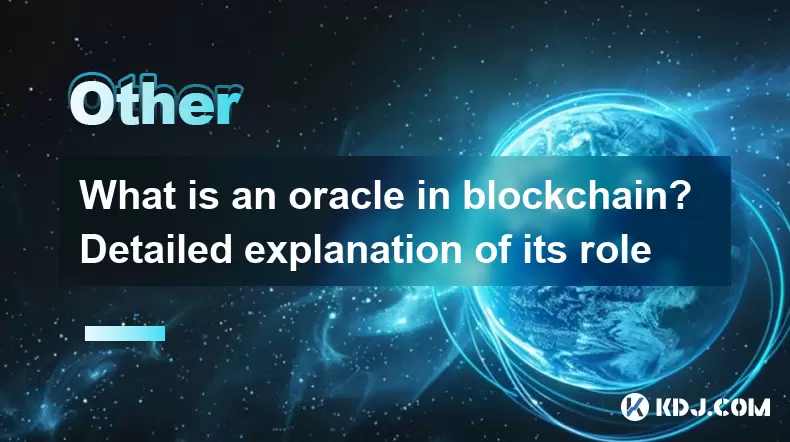
What is an oracle in blockchain? Detailed explanation of its role
Jun 21,2025 at 06:14am
Understanding the Concept of an Oracle in BlockchainIn the realm of blockchain technology, an oracle is a trusted third-party service that connects smart contracts with real-world data. Smart contracts are self-executing agreements where the terms are written directly into code and run on a blockchain network. However, these contracts operate in a close...
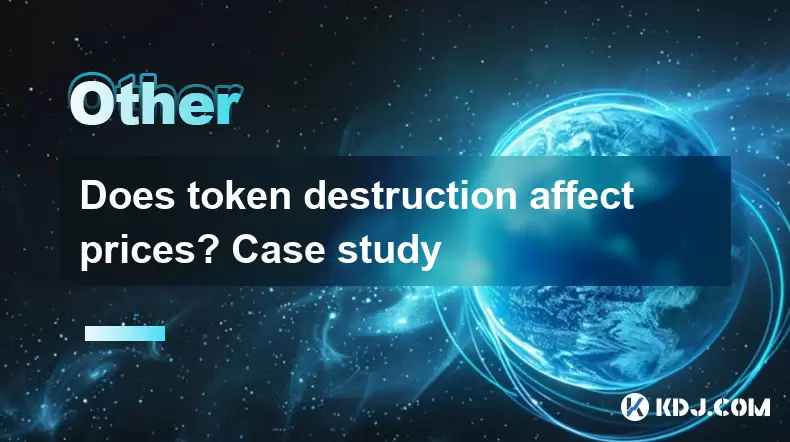
Does token destruction affect prices? Case study
Jun 22,2025 at 02:50am
Understanding Token DestructionToken destruction, commonly referred to as token burning, is a process where a portion of cryptocurrency tokens is permanently removed from circulation. This is typically done by sending the tokens to a non-recoverable wallet address, effectively reducing the total supply. Projects may implement token burns to create scarc...

What is a blockchain node? Popular science on the operating principle
Jun 22,2025 at 11:00pm
Understanding the Basics of a Blockchain NodeA blockchain node is essentially a computer connected to a blockchain network that participates in validating and storing transaction data. Each node plays a critical role in maintaining the integrity, transparency, and decentralization of the blockchain. Unlike traditional centralized systems where a single ...
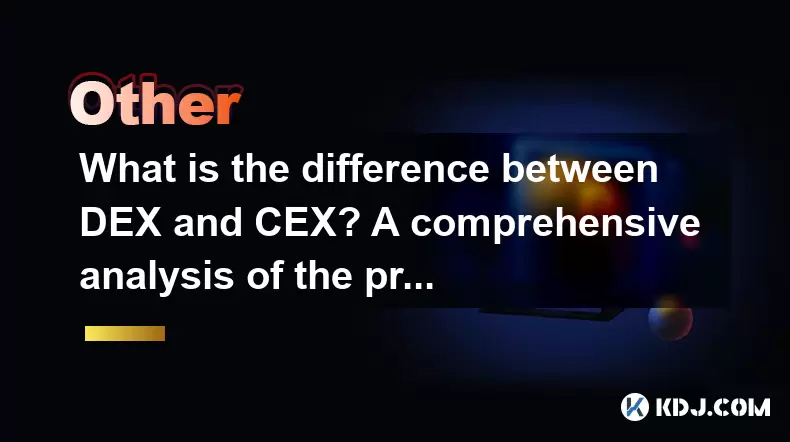
What is the difference between DEX and CEX? A comprehensive analysis of the pros and cons
Jun 24,2025 at 09:42am
What is a DEX (Decentralized Exchange)?A DEX, or Decentralized Exchange, operates without a central authority. Unlike traditional platforms, DEXs allow users to trade cryptocurrencies directly from their wallets. These exchanges rely on smart contracts to facilitate transactions, ensuring that no intermediary holds user funds. One of the most notable fe...
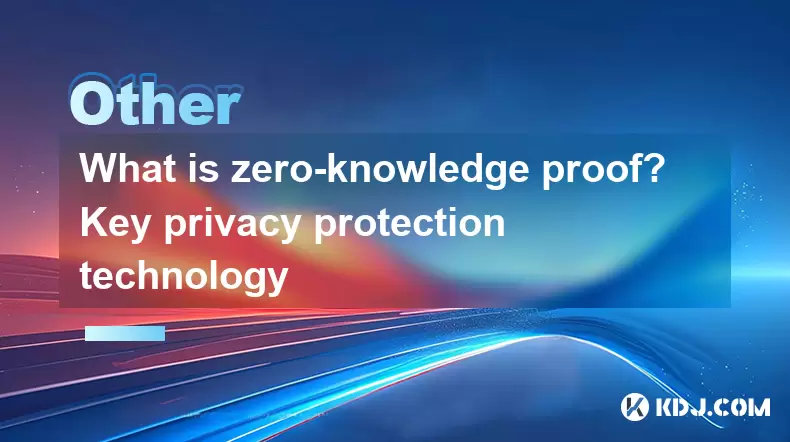
What is zero-knowledge proof? Key privacy protection technology
Jun 22,2025 at 07:29pm
Understanding Zero-Knowledge ProofZero-knowledge proof (ZKP) is a cryptographic method that allows one party to prove to another party that they know a value or information without revealing the actual content of that information. This concept is particularly important in the realm of privacy protection technologies, especially within blockchain and cry...

What can a blockchain browser check? A practical function guide
Jun 20,2025 at 07:35pm
Understanding the Role of a Blockchain BrowserA blockchain browser serves as a powerful tool for anyone interacting with blockchain networks. It allows users to explore, verify, and analyze data stored on the blockchain in real time. Unlike traditional ledgers or databases that are centralized, blockchains are decentralized and publicly accessible. This...

What is an oracle in blockchain? Detailed explanation of its role
Jun 21,2025 at 06:14am
Understanding the Concept of an Oracle in BlockchainIn the realm of blockchain technology, an oracle is a trusted third-party service that connects smart contracts with real-world data. Smart contracts are self-executing agreements where the terms are written directly into code and run on a blockchain network. However, these contracts operate in a close...

Does token destruction affect prices? Case study
Jun 22,2025 at 02:50am
Understanding Token DestructionToken destruction, commonly referred to as token burning, is a process where a portion of cryptocurrency tokens is permanently removed from circulation. This is typically done by sending the tokens to a non-recoverable wallet address, effectively reducing the total supply. Projects may implement token burns to create scarc...

What is a blockchain node? Popular science on the operating principle
Jun 22,2025 at 11:00pm
Understanding the Basics of a Blockchain NodeA blockchain node is essentially a computer connected to a blockchain network that participates in validating and storing transaction data. Each node plays a critical role in maintaining the integrity, transparency, and decentralization of the blockchain. Unlike traditional centralized systems where a single ...

What is the difference between DEX and CEX? A comprehensive analysis of the pros and cons
Jun 24,2025 at 09:42am
What is a DEX (Decentralized Exchange)?A DEX, or Decentralized Exchange, operates without a central authority. Unlike traditional platforms, DEXs allow users to trade cryptocurrencies directly from their wallets. These exchanges rely on smart contracts to facilitate transactions, ensuring that no intermediary holds user funds. One of the most notable fe...

What is zero-knowledge proof? Key privacy protection technology
Jun 22,2025 at 07:29pm
Understanding Zero-Knowledge ProofZero-knowledge proof (ZKP) is a cryptographic method that allows one party to prove to another party that they know a value or information without revealing the actual content of that information. This concept is particularly important in the realm of privacy protection technologies, especially within blockchain and cry...

What can a blockchain browser check? A practical function guide
Jun 20,2025 at 07:35pm
Understanding the Role of a Blockchain BrowserA blockchain browser serves as a powerful tool for anyone interacting with blockchain networks. It allows users to explore, verify, and analyze data stored on the blockchain in real time. Unlike traditional ledgers or databases that are centralized, blockchains are decentralized and publicly accessible. This...
See all articles

























































































